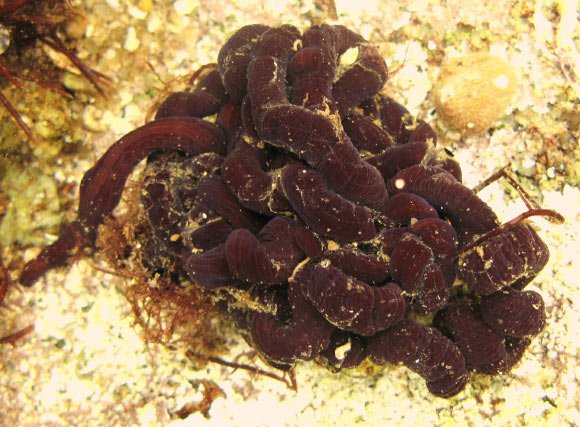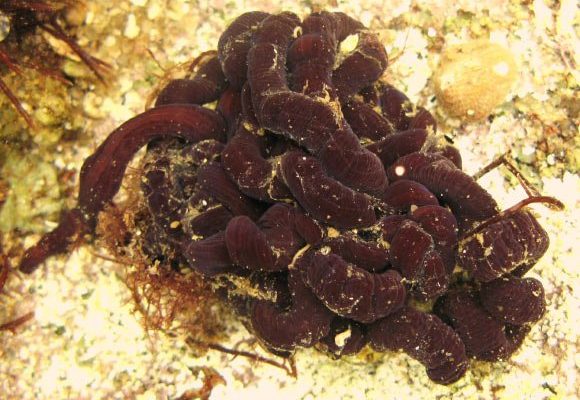
Imagine wandering through a bustling marketplace filled with vibrant vendors and delicious aromas. You’re drawn to the shellfish stall. It’s lively and colorful, pulsing with life. Now, imagine a sudden wave washing through, altering the whole market’s dynamics. That’s what bootlace worms can do to the shellfish ecosystem. They may seem small in the grand scheme of things, but their impact is anything but minor.
Let’s dive deeper into this fascinating relationship between bootlace worms and small shellfish and uncover the ecological threads that bind them.
What Are Bootlace Worms?
Bootlace worms, scientifically known as *Lineus longissimus*, are a type of nemertean worm. Their name comes from their long, slender bodies, resembling bootlaces. These creatures can be found in various marine habitats, from shallow coastal waters to deeper ocean environments. Here’s the twist—bootlace worms can be both predators and prey, making them crucial players in the food web.
They have a unique feeding mechanism. Using a specialized proboscis, they can capture small invertebrates, including shellfish, with surprising speed. This predatory behavior impacts the local populations of these shellfish, shifting balance in ecosystems. Think of bootlace worms as the silent predators of the underwater world.
While they seem unassuming at first, their long, ribbon-like forms are a reminder that even the strangest creatures have essential roles to play in marine life.
The Role of Small Shellfish in Marine Ecosystems
Small shellfish, including species like clams, mussels, and oysters, are often considered the “workers” of the ocean. They contribute to ecosystem health in several important ways:
- Filter Feeding: Shellfish help filter out sediment and algae from the water, improving water clarity.
- Habitat Formation: Species like oysters create reefs that provide shelter and breeding grounds for other marine organisms.
- Nutrient Cycling: As they feed, shellfish recycle nutrients back into the ecosystem, supporting various marine life forms.
Their presence creates a balanced environment, fostering biodiversity. However, this balance can easily be disrupted, especially by the predation of bootlace worms.
If bootlace worms are abundant in an area, they can significantly reduce the population of shellfish, which can have cascading effects on the entire ecosystem. Just think about it: fewer shellfish means less filtration and less habitat for many other ocean creatures.
The Predator-Prey Relationship
Here’s where it gets interesting! The interaction between bootlace worms and small shellfish is a classic example of a predator-prey relationship. When bootlace worms feast on shellfish, it’s not just a simple meal—it can result in major shifts in the ecosystem.
When bootlace worms are present in high numbers, they might decimate local shellfish populations. This decline can lead to decreased water quality, as there are fewer shellfish to filter the water. It’s like trying to cook pasta in murky water; you’ll end up with a less than appetizing dish.
Conversely, when bootlace worms are less prevalent, shellfish populations can thrive. This balance is critical for maintaining the health of marine ecosystems. So, the question becomes not just about the number of bootlace worms, but how they fit into the broader context of ocean health.
Impact on Biodiversity
Biodiversity is the heart of any healthy ecosystem. A diverse range of species contributes to resilience, ensuring that ecosystems can adapt to changes. Bootlace worms, as voracious predators, can influence this diversity. When they reduce shellfish populations, it can create a ripple effect, causing other species that rely on shellfish for food or habitat to decline as well.
This reduction in diversity can make the ecosystem more vulnerable to diseases and changes in environmental conditions. For example, if a disease strikes, a diverse ecosystem has a better chance of bouncing back compared to a more homogenous one, which might struggle to adapt.
In a way, bootlace worms act like a double-edged sword. While they play an essential role in controlling shellfish populations, their predation can also limit biodiversity. It’s a delicate balance that’s crucial for maintaining the overall health of marine environments.
Human Impact and Coastal Management
Humans have a significant impact on marine ecosystems, often altering the delicate balance between species. Coastal development, pollution, and overfishing can lead to changes in bootlace worm populations, which in turn affects small shellfish. For instance, nutrient runoff from agriculture can increase algal blooms, providing more food for bootlace worms and allowing them to thrive.
Coastal management seeks to create a sustainable balance between human activities and natural ecosystems. Implementing practices like habitat restoration, pollution control, and sustainable fishing can help maintain healthy populations of both bootlace worms and shellfish.
By understanding the ecological impact of bootlace worms on small shellfish, we can make informed decisions that protect marine environments. It’s all about harmony—ensuring that all species can coexist and thrive.
Conservation Efforts and Future Directions
Given the complex relationships in marine ecosystems, conservation efforts must consider the roles of both bootlace worms and small shellfish. While it’s essential to manage shellfish populations for fishing and food security, it’s equally important to understand how bootlace worms fit into this picture.
Future research should focus on studying these relationships in-depth. By monitoring bootlace worm populations, we can better understand their impact on shellfish and the overall ecosystem. Conservation strategies could include creating protected areas to shield vulnerable species, promoting biodiversity, and maintaining healthy water quality.
Remember, the ocean is a network of relationships. Every species, including bootlace worms, plays a part in that network. By considering these connections, we can work towards more sustainable and resilient marine ecosystems.
In the grand tapestry of marine life, bootlace worms may seem like an odd thread, but they weave an important story. Their relationship with small shellfish highlights the delicate balance of marine ecosystems. As both a predator and a vital part of the ecosystem, understanding bootlace worms is crucial for conservation efforts.
By recognizing the impact of these fascinating creatures, we’re better equipped to protect our oceans. Let’s continue to explore and appreciate the intricacies of marine life, ensuring that future generations can enjoy the beauty and diversity of our blue planet. After all, every little worm has a big role to play in keeping our oceans healthy and vibrant.

